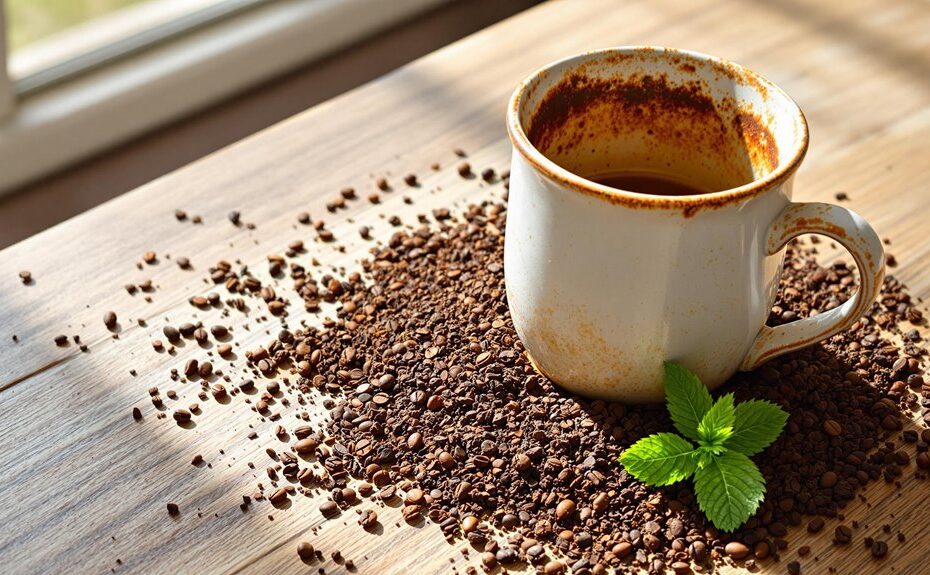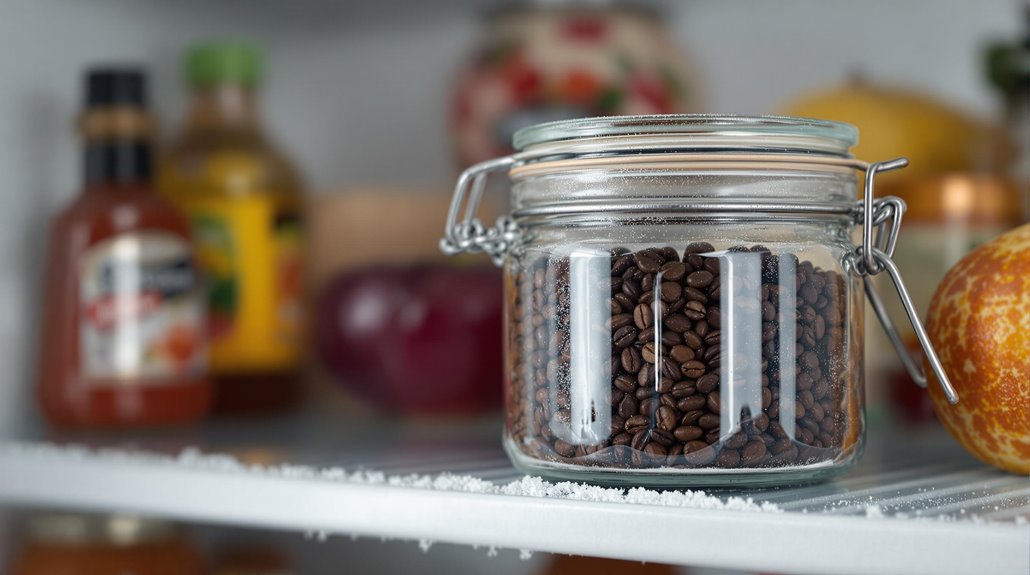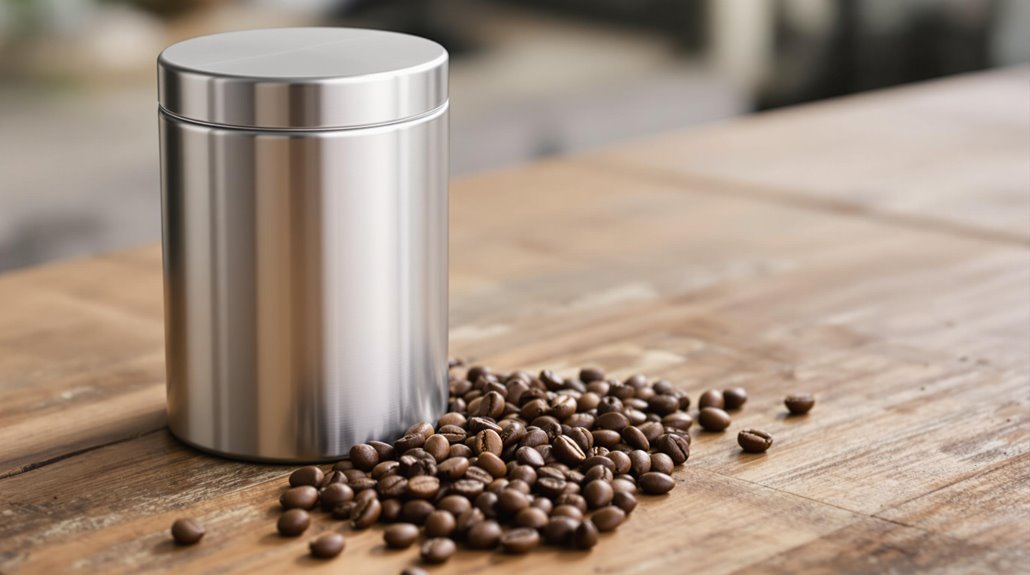







You might crave a second cup of coffee, but reusing the same grounds won't give you the rich, bold flavor you're after. While it's tempting to squeeze every last drop from your morning brew, reused grounds often yield a bitter, sour taste that's far from satisfying. Beyond flavor, there's more to ponder—like potential health risks and the surprising ways those spent grounds can still serve a purpose. If you're curious about how to make the most of your coffee without compromising quality or safety, there's a lot more to uncover about this everyday staple.
Key Takeaways
- Reusing coffee grounds results in a weaker, bitter, and sour brew due to over-extraction of tannins and acids.
- Only 20-30% of the original flavor and caffeine is extracted when reusing grounds.
- Improper storage of reused grounds can lead to mold or bacterial contamination.
- Reused grounds can clog filters and damage brewing equipment over time.
- Fresh coffee grounds ensure consistent flavor, safety, and optimal brewing results.
Why Reusing Coffee Grounds Isn't Ideal
Reusing coffee grounds might seem like a practical way to save money or reduce waste, but it often leads to a disappointing cup of coffee. When you brew coffee, most of the soluble compounds—like caffeine, oils, and flavor molecules—are extracted during the first use. Reusing coffee grounds means you're left with only 20-30% of the original flavor and caffeine, resulting in a weak, underwhelming brew. Additionally, the second brew from used coffee grounds often tastes bitter and sour. This happens because over-extraction pulls out undesirable compounds like tannins and acids, which dominate the flavor profile.
Storing used coffee grounds improperly can also pose health risks. If they aren't dried thoroughly, they can develop mold or bacteria, which may contaminate your next brew. Even if you dry them, the risk of contamination remains. Moreover, reusing coffee grounds in espresso machines or other brewing equipment can clog filters, damage components, and require more frequent cleaning. The residue left behind by reused grounds can affect the machine's performance and longevity. For a consistently flavorful and safe cup of coffee, it's best to avoid reusing coffee grounds altogether.
Alternative Uses for Coffee Grounds
After brewing your coffee, the grounds don't have to go to waste—they can serve a variety of practical purposes beyond your cup. Reusing coffee grounds in your garden is a smart move; they deter pests like slugs and snails while enriching the soil for acid-loving plants such as hydrangeas. Their high nitrogen content also makes them a valuable addition to compost piles, improving soil quality and reducing greenhouse gas emissions. If you're dealing with odors, used grounds can act as a natural deodorizer. Place them in your refrigerator, shoes, or gym bags to absorb and neutralize unpleasant smells. For cleaning, the abrasive texture of coffee grounds makes them ideal for scrubbing stubborn residues off pots, pans, and surfaces, offering an eco-friendly alternative to chemical cleaners. By reusing coffee grounds, you not only reduce waste but also harness their potential in everyday tasks, making them a versatile resource in your home.
Coffee Grounds as a Natural Exfoliant
Transform your skincare routine by incorporating coffee grounds as a natural exfoliant. The coarse texture of coffee grounds effectively sloughs off dead skin cells, leaving your skin smoother and more radiant. When massaged onto the skin, the caffeine in coffee grounds stimulates blood circulation, reducing puffiness and promoting a healthier complexion. Additionally, the antioxidants present in coffee grounds combat free radicals, helping to protect your skin from environmental damage and reducing inflammation.
To create a hydrating exfoliating scrub, mix coffee grounds with coconut oil or honey. This combination not only enhances the exfoliating properties but also moisturizes your skin, preventing dryness. Apply the mixture in gentle, circular motions, focusing on areas prone to roughness or cellulite. Regular use can help break down fat deposits, reducing the appearance of cellulite over time.
For best results, use coffee grounds as an exfoliant 2-3 times a week. Avoid over-exfoliating, as it can irritate your skin. Rinse thoroughly with lukewarm water and follow up with a moisturizer to lock in hydration. By integrating coffee grounds into your skincare regimen, you'll harness their natural benefits for healthier, rejuvenated skin.
Using Coffee Grounds in Gardening
You can use coffee grounds to acidify soil, benefiting plants like blueberries and azaleas that thrive in acidic conditions. They also act as a natural pest repellent, deterring slugs and ants with their texture and caffeine content. Adding grounds to compost boosts nitrogen levels, improving soil fertility and structure for healthier plant growth.
Acidic Soil Benefits
Rich in acidity and nutrients, coffee grounds can substantially benefit acid-loving plants when incorporated into your garden soil. If you're growing blueberries, azaleas, or rhododendrons, adding coffee grounds to your acidic soil can help lower its pH, creating an ideal environment for these plants. Coffee grounds contain approximately 2% nitrogen, which enhances soil fertility and supports healthy growth for acid-loving species. To use them effectively, mix the grounds into the top layer of soil or blend them with compost to improve soil structure and water retention. This method guarantees the grounds decompose gradually, releasing nutrients without overwhelming the plants. However, avoid overapplication, as excessive acidity can harm plants that prefer neutral or alkaline conditions. For best results, test your soil's pH before adding coffee grounds to confirm it aligns with your plants' needs. By strategically incorporating coffee grounds into your acidic soil, you'll create a nutrient-rich, well-draining environment that promotes vigorous growth for acid-loving plants.
Natural Pest Repellent
Beyond improving soil acidity, coffee grounds also serve as an effective natural pest repellent in gardening. You can use coffee grounds to repel insects, slugs, and snails by sprinkling a thin layer around the base of your plants. The abrasive texture and caffeine content in coffee grounds create a barrier that deters these pests without introducing harmful chemicals. For slugs and snails, a 1-centimeter layer of coffee grounds can reduce their activity for up to seven months, protecting your plants from damage.
When applying coffee grounds, make sure you spread them evenly and avoid piling them too thickly, as excessive acidity might harm plants that prefer neutral or alkaline soil. Focus on areas where pests are most active, such as around leafy greens or seedlings. As the coffee grounds decompose, they'll continue to repel pests while gradually enriching the soil. This dual benefit makes them a practical, eco-friendly solution for maintaining a healthy garden. Remember to monitor your plants' health and adjust usage if you notice any adverse effects.
Composting Nutrient Boost
How can coffee grounds transform your compost into a nutrient-rich powerhouse? By adding nitrogen, coffee grounds enhance soil fertility, promoting robust plant growth. Nitrogen is a critical nutrient for composting, as it fuels microbial activity, speeding up decomposition. A 2016 study revealed that compost containing 40% coffee grounds reduced greenhouse gas emissions by 40%, making it an eco-friendly choice. To maximize benefits, balance coffee grounds with carbon-rich materials like dried leaves or shredded paper. This prevents acidity buildup and guarantees ideal pH levels for your compost. Coffee grounds also improve water retention, making them particularly useful in dry climates where moisture conservation is essential. Additionally, they absorb heavy metals, detoxifying contaminated soils and creating a safer environment for your plants. When incorporating coffee grounds into your compost, layer them evenly to avoid clumping, which can hinder airflow. Aim for a ratio of 1 part coffee grounds to 3 parts carbon-rich materials. Regularly turn your compost to maintain aeration and accelerate breakdown. By integrating coffee grounds, you'll create a nutrient-dense compost that enriches your garden soil and supports healthier, more vibrant plants.
Coffee Grounds as Lawn Fertilizer
Sprinkling coffee grounds on your lawn can serve as an effective, eco-friendly fertilizer, providing essential nutrients like nitrogen, potassium, and phosphorus to strengthen grass and promote healthy growth. These nutrients are released slowly as the coffee grounds decompose, ensuring a steady supply for your lawn over time. Additionally, coffee grounds attract earthworms, which aerate the soil and enhance nutrient absorption, further improving soil health. This natural fertilizer reduces reliance on chemical treatments, making it a sustainable choice for lawn care.
To use coffee grounds effectively, spread them thinly across your lawn, ensuring they don't clump together. Overapplication can create a dense layer that blocks water and airflow, potentially harming grass roots. Aim for a light, even distribution, mixing the grounds into the soil if possible. This method prevents compaction and allows the grounds to break down gradually, enriching the soil without disrupting its structure. By incorporating coffee grounds into your lawn care routine, you'll foster a healthier, greener lawn while minimizing environmental impact.
Repurposing Coffee Grounds for Pest Control
Coffee grounds' abrasive texture and strong scent make them a natural deterrent for pests like ants, slugs, and snails. To repel pests effectively, sprinkle used coffee grounds around the base of garden plants or along pathways where insects travel. The grounds create a physical barrier that pests avoid due to their rough texture, while the scent masks the attractants that draw them in. For flying insects like mosquitoes, mix used coffee grounds with water and let the mixture steep overnight. Strain the liquid and spray it around outdoor seating areas to deter these pests. The caffeine in coffee grounds also acts as a natural toxin for certain insects, enhancing their repellent properties. However, avoid overapplying coffee grounds directly to soil, as excessive acidity can harm plants while repelling pests. Use them sparingly and in combination with other pest control methods for the best results. By repurposing coffee grounds, you not only reduce waste but also create an eco-friendly solution to keep unwanted critters at bay.
Composting Coffee Grounds for Nutrient-Rich Soil
By incorporating coffee grounds into your compost, you can markedly enhance the nutrient content and overall quality of your soil. Coffee grounds are rich in nitrogen, a key nutrient that boosts soil fertility and supports robust plant growth. When added to compost, they help balance the carbon-to-nitrogen ratio, especially when mixed with carbon-rich materials like dried leaves or shredded paper. This combination accelerates decomposition and creates a nutrient-dense compost ideal for enriching soil.
Research shows that compost containing 40% coffee grounds can reduce greenhouse gas emissions by 40%, making it an eco-friendly choice. Additionally, coffee grounds improve soil structure by enhancing water retention and fostering microbial activity, which benefits plant roots. They also help absorb heavy metals, reducing the risk of soil contamination and creating a safer growing environment.
To maximize benefits, avoid adding coffee grounds in large clumps, as they can compact and slow decomposition. Instead, layer them evenly throughout your compost pile. Over time, your compost will transform into a dark, crumbly material that enriches soil, promotes healthy plant growth, and supports sustainable gardening practices.
Creative DIY Projects With Coffee Grounds
You can repurpose coffee grounds as a natural skin exfoliant by mixing them with coconut oil or honey to create a gentle scrub that removes dead skin cells. For a homemade candle, blend used coffee grounds with melted soy wax to craft eco-friendly candles that emit a subtle coffee aroma. Both projects are simple, sustainable, and make practical use of leftover grounds.
Natural Skin Exfoliant
Reusing coffee grounds as a natural skin exfoliant is a simple yet effective way to enhance your skincare routine. Coffee grounds, with their coarse texture, act as a natural exfoliant, gently sloughing away dead skin cells to reveal smoother, brighter skin. The caffeine in coffee grounds can also help reduce puffiness and improve blood circulation, making them ideal for facial or body scrubs. To create a hydrating scrub, mix used coffee grounds with coconut oil or honey, which adds moisture while exfoliating. The antioxidants in coffee grounds further protect your skin from free radicals and environmental damage, promoting a healthier complexion. Apply the mixture in circular motions, focusing on areas prone to dryness or roughness, then rinse thoroughly. Regular use of this DIY scrub can leave your skin feeling rejuvenated and soft. Make sure the grounds are finely ground to avoid irritation, especially on sensitive skin. Store any leftover scrub in an airtight container for up to a week. By incorporating coffee grounds into your skincare, you're not only reusing waste but also benefiting from their natural exfoliating and revitalizing properties.
Homemade Candle Wax
For a creative and eco-friendly twist on candle-making, coffee grounds can be incorporated into homemade candle wax to produce a unique, textured finish and a subtle coffee aroma. To make these candles, start by melting soy wax in a double boiler. Once the wax reaches a liquid state, mix in used coffee grounds at a 1:4 ratio—one part grounds to four parts wax. This guarantees the texture remains manageable while allowing the grounds to disperse evenly. Stir thoroughly to prevent clumping, then pour the mixture into a heat-resistant container with a pre-waxed wick. As the wax cools, the grounds will settle, creating a rustic, speckled appearance. When burned, the caffeine in the grounds releases a mild, pleasant scent, enhancing the ambiance. These candles make excellent sustainable gifts or home decor items, combining functionality with aesthetic appeal. Make sure the grounds are completely dry before use to avoid moisture-related issues. By repurposing coffee grounds, you not only reduce waste but also craft a distinctive, aromatic candle that's both practical and environmentally conscious.
Disclosure: As an Amazon Associate, I earn from qualifying purchases.





